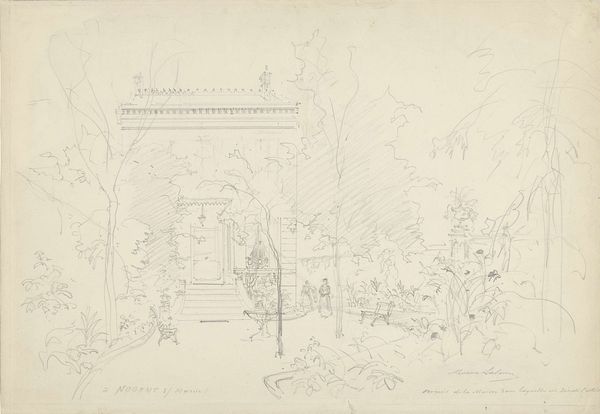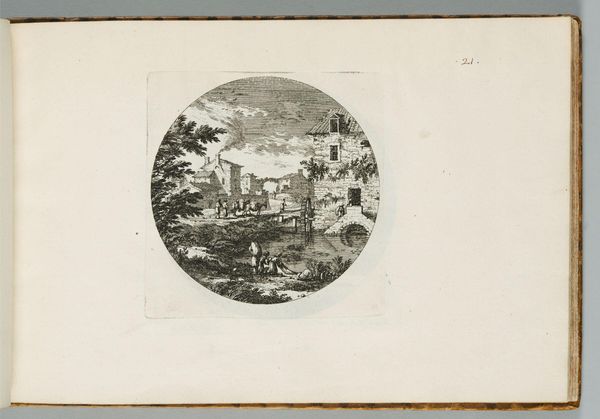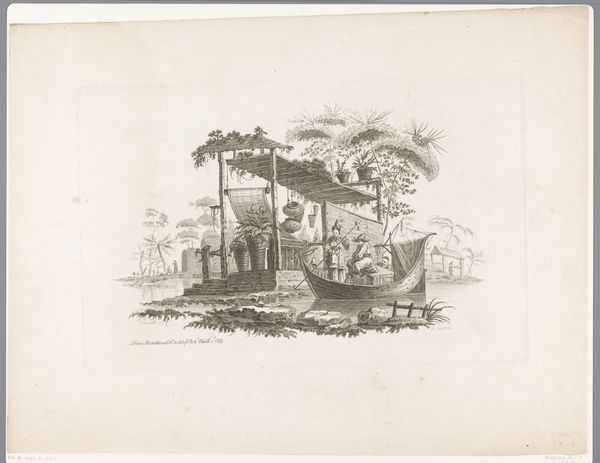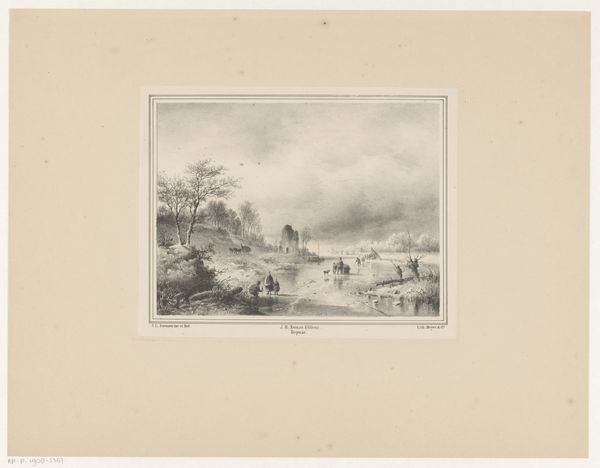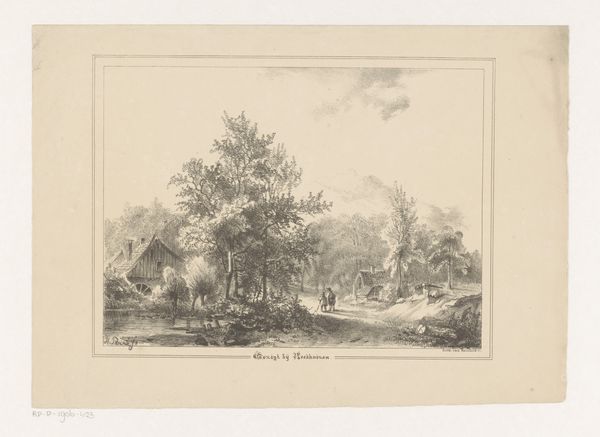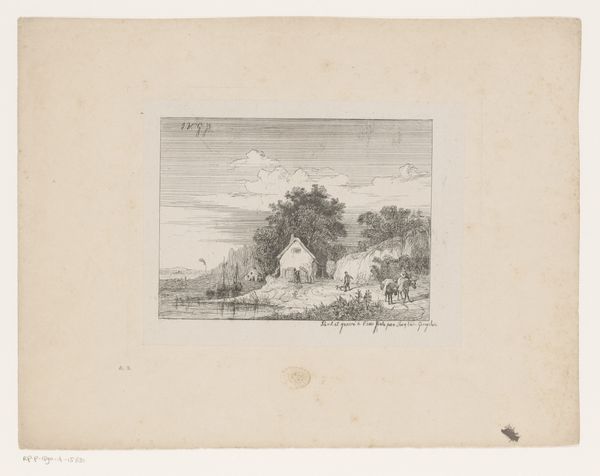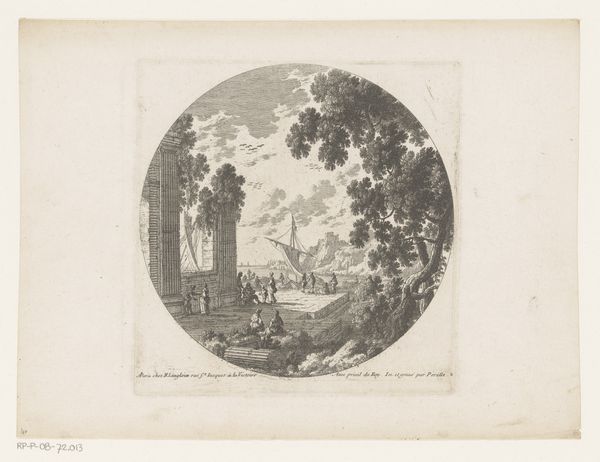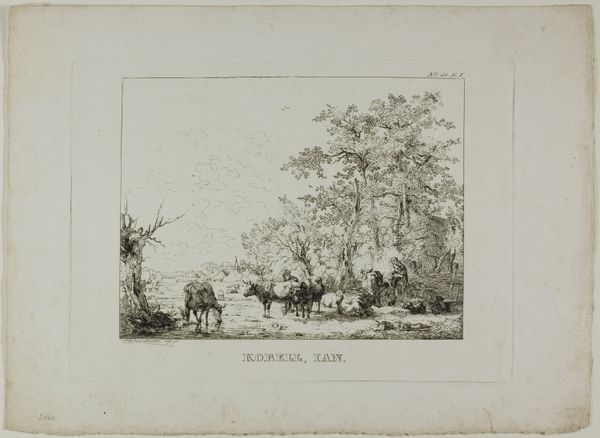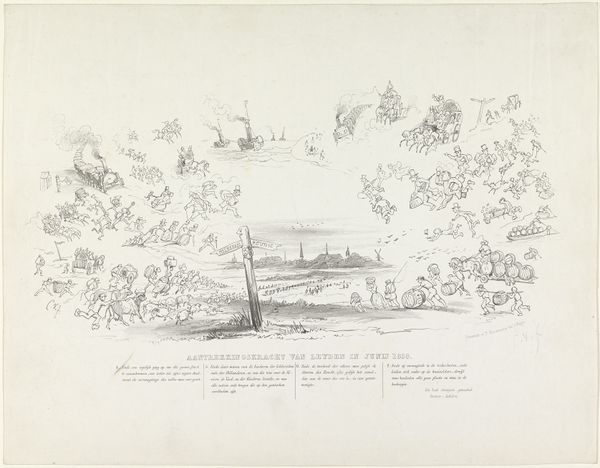
drawing, print, etching, ink
#
drawing
#
baroque
# print
#
etching
#
pencil sketch
#
landscape
#
ink
#
pen-ink sketch
#
pen work
#
sketchbook drawing
#
italian-renaissance
Dimensions: height 135 mm, width 199 mm
Copyright: Rijks Museum: Open Domain
Curator: Here we have Remigio Cantagallina’s “Landschap met ruïne,” created around 1622. It’s an etching, so delicate, almost like a whispered memory of a place. Editor: A whisper, yes! The mood it evokes is strangely peaceful despite depicting a ruin. There’s something so captivating about that interplay, the suggestion of something lost within a serene landscape. Curator: The artist captured a very specific trend of his era: The allure of decay. Travel was becoming more common, and these depictions of crumbled buildings fed into a new form of cultural understanding –– almost like collecting experiences and impressions from faraway places. Editor: That ruin feels symbolic. The composition directs our eye to it; all those lines converging at this crumbling structure. Ruins speak of history, of time’s relentless passage, but there’s also this sense of human impermanence, right? We build, we strive, but ultimately nature reclaims everything. Curator: Absolutely. Cantagallina uses the landscape almost as a stage, a backdrop against which humanity’s dramas, its building and destruction, play out. But look at how finely he etches the trees! The light dapples through the leaves as the scene balances detailed lines and open space to suggest the texture of nature. Editor: There’s such vulnerability to an etching, isn't there? The fragility of the lines mimics the vulnerability of the ruin itself, constantly eroded, slowly disappearing back into the earth. And those figures there – the small human scale makes the ruin more formidable. They are almost dwarfed by the weight of history. Curator: They’re bystanders as the scene suggests not only the literal crumbling of brick and mortar but, on a grander scale, of cultures and eras. He creates the stage for contemplating that. Editor: It’s interesting to think of people centuries ago looking at this image, reflecting on these same themes of time and memory and finding some kind of connection with this lost world. We’re still drawn to it today. Curator: In a way, this small print holds within it an echo of the ages. And in those delicate lines we get a very sensitive portrayal. Editor: I love that it prompts all sorts of stories. A poignant piece.
Comments
No comments
Be the first to comment and join the conversation on the ultimate creative platform.
